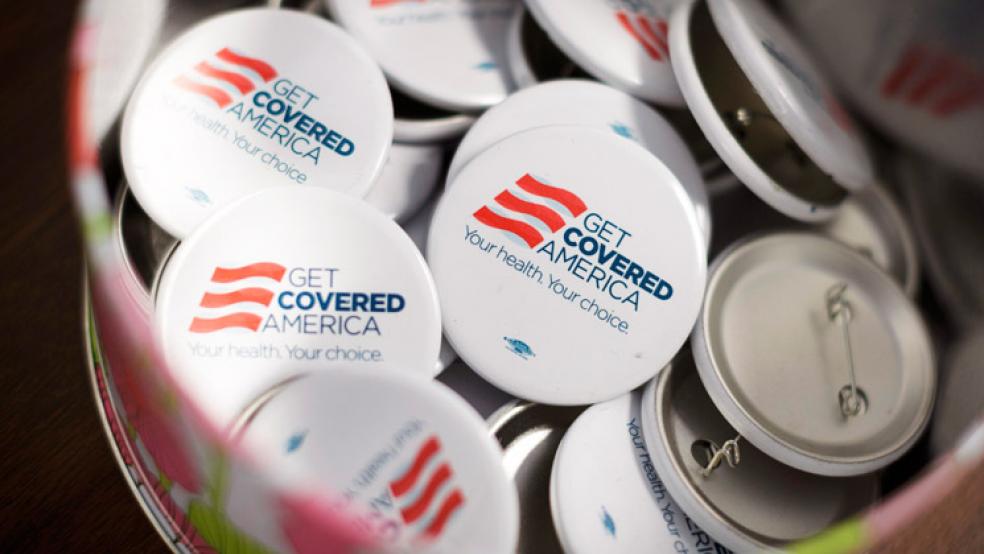Barack Obama wasted little time last week declaring victory as the deadline for enrollment in Affordable Care Act exchanges expired – well, more or less, anyway. The White House celebrated as it announced that 7.1 million consumers had signed up for health insurance through the federal and state exchanges, slightly exceeding their original goals and significantly outpacing expectations after the disastrous rollout of Obamacare last October. “The debate over repealing this law is over,” President Obama told the press on April 1. “The Affordable Care Act is here to stay.”
Last week, that sounded like wishful thinking. Two new studies released this week prove it.
Before we get to these studies, though, we should recognize why we need outside organizations to validate White House claims in the first place. The Department of Health and Human Services still has no way to quantify important data about those consumers signing up for health insurance through state and federal exchanges.
Related: 14.5 Million to Get Massive Premium Increases
More than six months after the initial rollout of Obamacare -- and four years after the ACA’s passage -- the systems designed by HHS still cannot determine basic and critical information about enrollments such as whether a premium payment has been made. Without a premium payment, a sign-up in the web portal does not mean coverage has been extended.
Furthermore, the systems were not designed to collect important demographic information such as pre-existing coverage, current health status, or even definite age ranges, even though the success of the Obamacare structure depends on getting previously uninsured healthy Americans locked into expensive comprehensive insurance.
Without the “young invincibles” providing new funding for risk pools that now have to cover older and less-healthy consumers under “community pricing” restrictions, premiums will escalate rapidly, forcing more consumers out of the system and triggering the dreaded “death spiral” for insurers.
Related: Obamacare’s Next Challenge: IRS Verification
In order to determine the scope of the celebration, then, we need outside surveys to give us an idea of the size and composition of the actual enrollment population in Obamacare. The first of the independent studies comes from the RAND Corporation, which studied the changes in the health insurance market between September 2013 – just before the rollout of the state exchanges – and the end of the open-enrollment period at the end of last month.
While the White House can claim credit for a net increase of 9.3 million insured and a lowered uninsured rate from 20.5 percent to 15.8 percent, the data provides a significantly different picture than that painted by President Obama and the ACA’s advocates.
First, a significant amount of this increase comes from Medicaid enrollments, not private insurance. Almost six million people enrolled in Medicaid, and earlier studies showed that a relatively small number of those came from the expansion built into the ACA; most of these would have been Medicaid-eligible prior to the reform.
Another 8.2 million more people enrolled in employer-provided health care, as 7.1 million left the “other” category and another 1.6 million left the individual insurance markets. Only 3.9 million actually enrolled in insurance plans through state or federal exchanges – not 7.1 million as claimed by Obama. That number falls far short of even the lowered expectations issued by HHS and the White House earlier this year.
Related: The Coming Obamacare Shock for 170 Million Americans
Moreover, those who did enroll through the state exchanges didn’t provide the demographic lift and risk-pool support needed to prevent massive increases in either premiums or deductibles, or both, in the near future. Pharmacy benefit manager Express Scripts, which collected more data from insurers than HHS managed through its own exchanges, determined that the incoming enrollees require more medical attention than the previous risk pools, not less – which means that insurers will need to raise premiums even more than first thought.
Their new study shows, for instance, that the enrollees from state and federal exchanges have a 47 percent higher use of specialty medications than in commercial plans in general. “Increased volume for higher cost specialty drugs can have a significant impact on the cost burden for both plan sponsors and patients,” the report reminds readers. “Despite comprising less than 1 percent of all U.S. prescriptions,” the report continues, “specialty medications now account for more than a quarter of the country’s total pharmacy spend.”
The medications themselves show that the care costs will increase relative to the existing risk pools as well. The rate for HIV medications in Obamacare exchange plans is four times higher than in existing commercial plans. Medication prescriptions are 35 percent higher, and anti-seizure medication increases 27 percent. Ironically, the only category where exchange consumers have lower demand than commercial-plan customers is in contraception – the focus of a big political battle in the employer mandate.
Related: Obamacare--Taxpayers in the Hole for $1.5 Trillion
As Express Scripts, which studied changes in pharmacy benefits concludes that the ACA has succeeded in getting coverage to consumers who need it. However, that comes at a high cost for those who had their existing coverage canceled and saw their premiums and deductibles skyrocket as a result of Obamacare. Furthermore, the number of those who gained coverage may be even smaller than the RAND study concluded.
Of those who enrolled in an exchange plan, Express Scripts finds, 43 percent already had Express Scripts coverage in 2013 – and at least some of the other 57 percent may have had coverage under another prescription-medication management service. If the total number of actual exchange enrollees is 3.9 million, the final number of previously uninsured exchange consumers may be only as high as 2.23 million.
The debate on the law is far from over. When the next round of premium increases hits over the summer, and the market for employer-provided health insurance undergoes the same kind of massive disruption as the individual market did over the last six months, the debate over the honesty and integrity of the Obama administration may hit new levels of intensity.
Top Reads from The Fiscal Times:
- Obamacare is a “Haves and Have Nots’ Health System
- Sexting and Drunk Driving Lead to Job Security at VA
- $6 Billion Goes Missing at State Department






